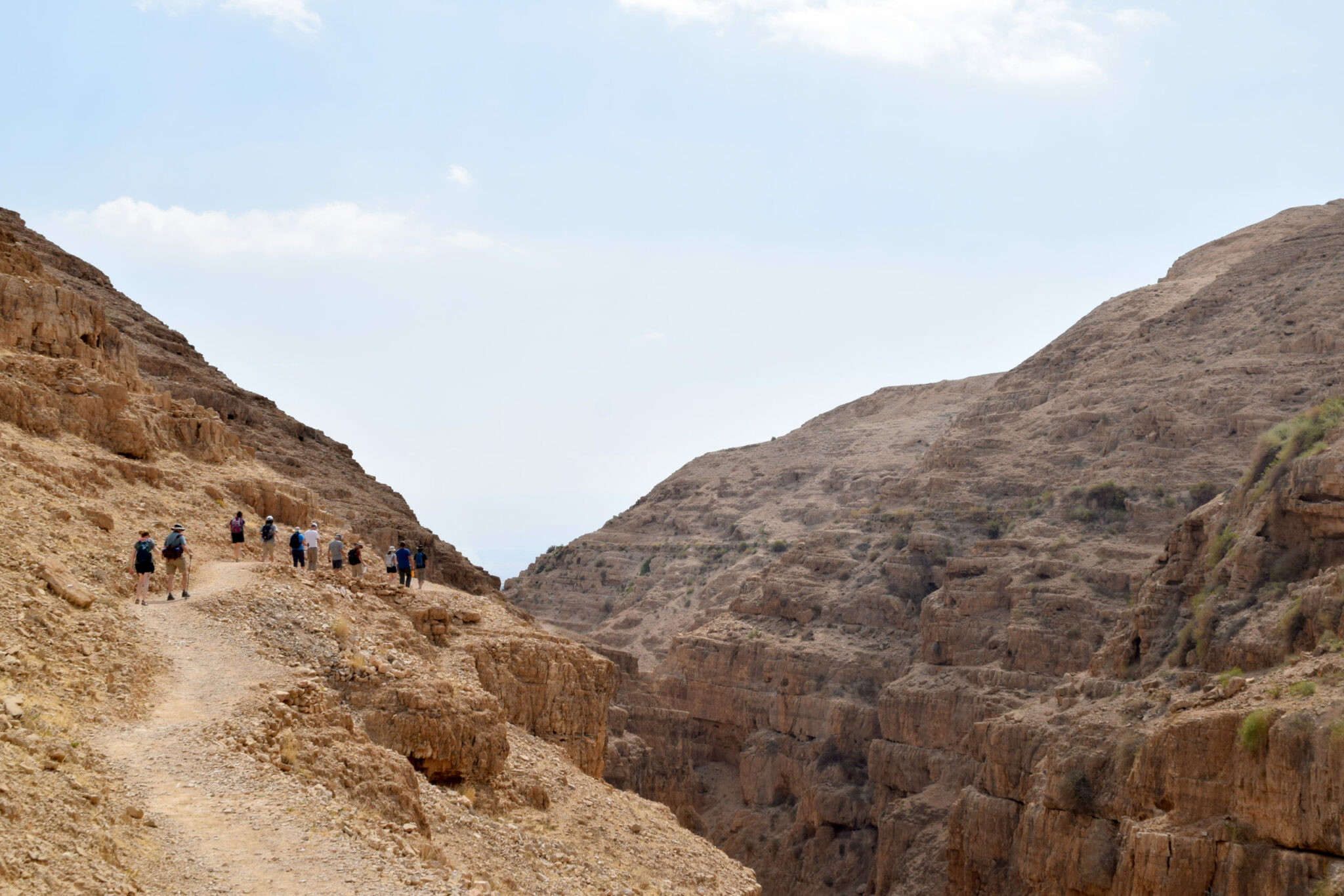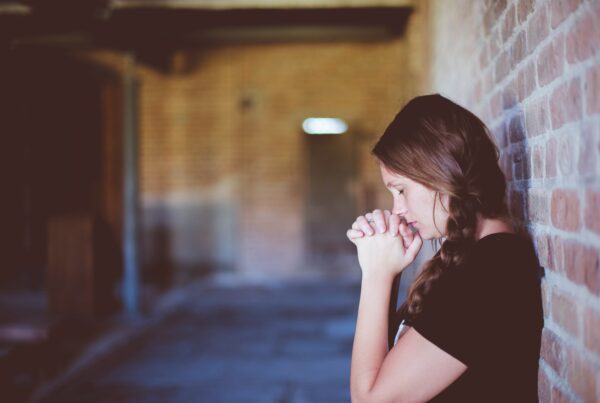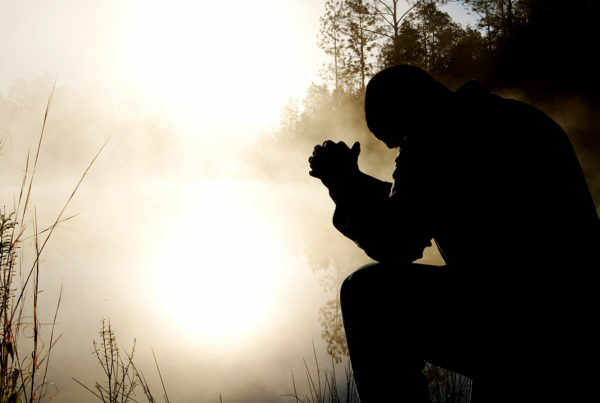Last year, Barbara Pimentel joined a dozen others on a life-transforming trip to Israel and Palestine—the Holy Land. More than a tour of historic and biblical sites, this trip was filled with Bible studies, conversations with Israelis and Palestinians, and a special emphasis on women in ministry. As she walked and prayed in the footsteps of Jesus, Pimentel felt profound connections to the Holy Spirit, her Christian roots, and her fellow travelers. Here, she shares her experiences and how she approaches prayer differently after her time in the Holy Land.
Walking where Jesus walked and taught
It’s hard to put into words what it’s like to be in places where Jesus walked. It was incredibly profound. And it was overwhelming—not overwhelming as in “too much,” but it was a much deeper experience to be connected to Jesus in that way—to be where he walked and where he taught.
To see Scripture that you’re learning about and/or teaching come to life—you can’t beat it. When I read the Bible stories, I know that’s my history, too. I am a Latina, but Christianity is also my identity. I’m connected to the background and history of these places where Jesus walked. It was profound to just stop and breathe that air. This experience allowed so much growth.
Particularly, in the city of Magdala, I felt overwhelmed by the Spirit, knowing Jesus was there, spoke there, and taught there. At the site, you can see what has been excavated, and you can see the evidence that men and women worshiped together. That has stuck with me. I take that away as a source of encouragement. I have asked the questions about women in ministry, and I found my answer in Scripture. God has put women in every position. It’s not God who says, “You can’t do this.” And it was Jesus who taught both men and women. That’s what he did. In the story of Mary and Martha, Jesus says of Mary, “She’s where she belongs, learning with the others.” It was so powerful to see the evidence of belonging for both women and men in the ruins at Magdala.
Related: Building God’s Church Together Bible study: flourishing partnerships between women and men
We had communion on a boat, stopped and still, on the Sea of Galilee. It was amazing to be there; Jesus did his ministry around there and in those waters. And the Garden of Gethsemane was intense to walk through. There’s a small church where Jesus wept, called the Church of Agony. You can stop and look out at the old city of Jerusalem, to see what Christ saw as he looked ahead. It was so meaningful to walk leisurely through the garden and reflect on that, to talk to God—like Christ—and visually process all that happened there.
I also experienced a little bit of sadness because of everything we were seeing. The realization and the reality of the present conflict, of so much hate and bloodshed where my Christ taught about a kingdom of peace, was deeply saddening.
But what I will never forget is what I call “the Jordan River embrace.” We went to the Jordan River, and no one else was there because we had a different entry point. We had a baptism remembrance time, which was a really beautiful experience. Afterward, three other sisters and myself stayed behind in the water, held hands, and prayed. And it just happened. In those waters, as we were praying, there was a breeze that gave me the feeling of being embraced. To feel hugged by the wind in the Jordan River during prayer was truly precious.
The power of prayer
As disciples of Christ, prayer is important because it’s our communication. It’s our cell service to God—and it goes both ways, to and from God. When we stop in prayer, it helps ground us and bring focus to what we need to do. And prayer is a time to be reminded of hope. We get caught up in the sad and ugly news because it’s coming at us all the time, but prayer reminds us of hope because that’s when we connect to God. God is here when things get ugly. We need that more often, now more than ever. We need the refills of hope. We need to also spread that hope. So we need to power up in prayer!
During our prayer time in the Holy Land, I felt a connection with my travel family. We were a group that had just met and come together, but there was a special connection during our prayer times. And those were the moments I felt hope. We saw and experienced the current realities in Israel and Palestine, like the military court, and that’s intense. It’s disheartening, angering, and incredibly sad. But it was prayer that connected our group, embraced us, and showed us hope again. That was so needed and so beautiful.
In the Holy Land, too, I was completely removed from my daily norm, so in times of prayer, the pressures of day-to-day life were not on my shoulders. Prayer felt more leisurely, like a stroll. And it was through prayer that my fellow travelers and I were able to process what we were learning and unlearning in Bible studies, site visits, and discussions on current reality. It was both a historic and current trip, and we were challenged. When you’re challenged and stretched, that time to process is important. What better way to do that than in prayer with God?
Now, I’m trying to apply that “laid-back” aspect to prayer times—being more removed from the things that sit and weigh on my mind. That posture allows me to be more open so that I can hear and connect more with God. Sometimes, I will physically remove myself from a place and just sit outside, even if it’s cold, so that I can prepare myself to hear God. When you’re able to hear, you might get your answers faster! If we’re always on the go, we might not see or hear what God is putting right in front of our face.
In step with the Holy Spirit
Jesus told his disciples—and us—that he would send the Holy Spirit. And we talk about the Spirit so little, but the Spirit is a permanent gift that dwells within. People experience the Holy Spirit differently, but we have to be more intentional and open to this incredible gift. Allow yourself to experience the Holy Spirit as fully and openly as possible.
Prayer is a more intentional time to feel the Holy Spirit. Adopt a true spirit of wanting to hear God, to see, to ask questions, and to be challenged. Stop and connect with the Holy Spirit.
There was never a time in the Holy Land when I felt the Spirit wasn’t present. The Spirit worked through each person in our group, particularly in the way we were able to come together and engage as one group. We were overwhelmed by the Spirit, and it was a true gift. It was amazing to connect to my Christian culture and history by walking where Jesus walked, but it was also profound to connect with the Spirit, like people who connect to their culture and identity through an item passed down through their family. That’s why this trip was life-changing for me.

Barbara Pimentel
Barbara Victoria Pimentel currently serves at her local church, Iglesia del Redentor (Church of the Redeemer), in Brooklyn, New York. She is an elder, Sunday school teacher and coordinator, and technical team leader. Barbara is currently the treasurer for her classis and serves the Reformed Church in America’s Women’s Transformation and Leadership #sheiscalled ministry. She is currently enrolled in the certificate program at New Brunswick Theological Seminary. Barbara is also a proud pet-mom to a spunky 15-year-old shih-tzu-poo named Oreo.



